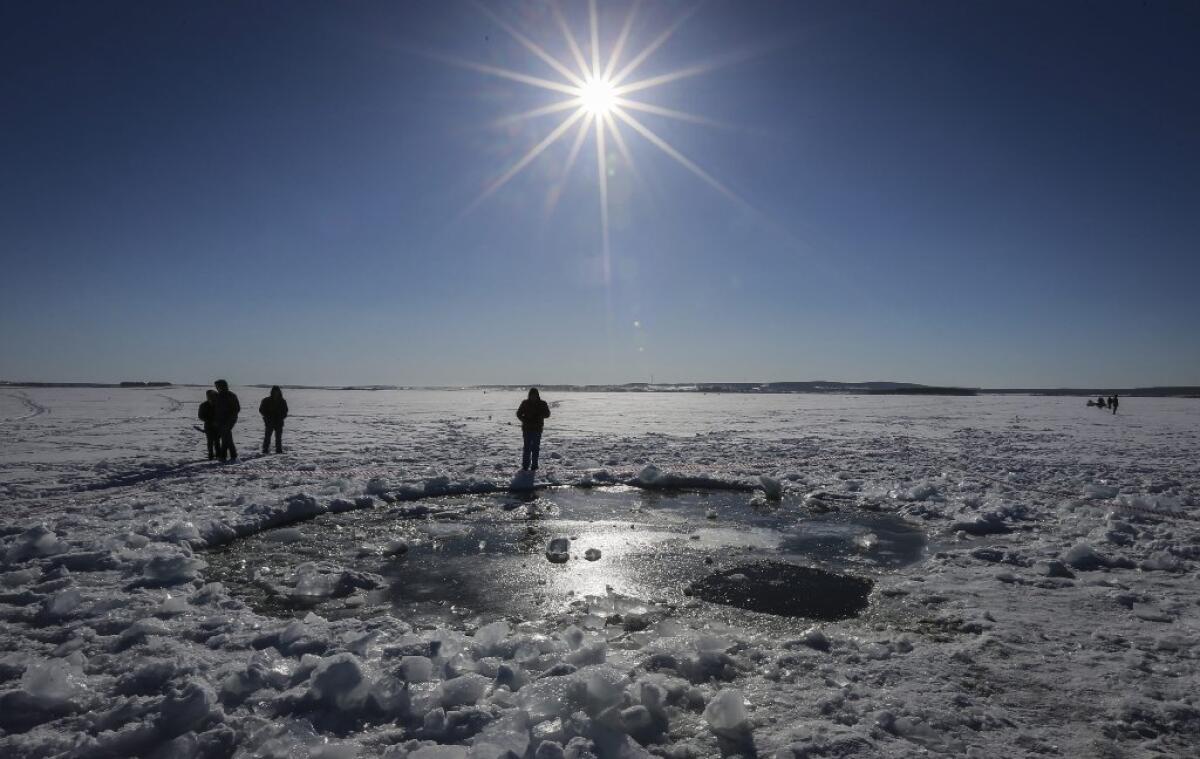Huge meteorite from fireball smashed hole in frozen Russian lake

Divers at a Russian lake have pulled out a 5-foot-wide, half-ton hunk of meteorite from the Chelyabinsk meteor that streaked across skies in February. The large black fragment, weighing more than half a ton, smashed a nearly 20-foot-wide hole into the ice covering Lake Chebarkul. It could potentially be the most massive fragment of the dramatic fireball captured on video across the region, and researchers are calling it a once in a lifetime moment.
“It’s a once-in-a-100-year event. It’s very exciting from that point of view,” said meteoriticist Caroline Smith, who curates the Natural History Museum’s meteorite collection in London and was following the find’s progress. “It’s been of great interest to not only me but my colleagues around the world as well.”
The rock weighed in at 570 kilograms (about 1,257 pounds) but it may be heavier because it broke the scale, Smith noted -- and broke into pieces in the process as well.
It’s heavier than it looks, too, she added.
“When you actually have a look at it, yeah, it’s big lump of rock, but it’s not actually enormous,” Smith said. “Because with meteorites, most of them contain iron and nickel metal. So for their size, they’re quite dense rocks.”
Even though this is a massive meteorite fragment, it’s a tiny portion of the original missile, a roughly 56-foot-wide space rock that traveled about 40,000 mph and vaporized roughly 15 miles above the surface, resulting in an explosion measured between 300 and 500 kilotons, roughly the same as a modern nuclear bomb, according to a Times report. Fragments rained down from the skies and several such meteorites have been collected since then.
This enormous specimen pulled from the lake may not provide any novel scientific information, Smith said, as it appears to be an ordinary chondrite, the most common meteorite to hit Earth. (This doesn’t necessarily mean that they are from the most common asteroids in the solar system -- just that, for some reason, fragments from their particular parent asteroids tend to land on Earth more often.)
But in any case, having such a big piece of the original space rock, coupled with all that video footage, is a real boon, she said.
“It’s the whole package,” Smith said. “It’s the fireball plus the meteorite that’s interesting, not just the meteorite.”
This fragment could possibly be the largest Chelyabinsk meteorite found, Smith said -- other bits tend to be walnut-sized. And yet even this massive chunk (which has reportedly now broken apart) is still a small fraction of roughly 56 feet it was as it plunged through the atmosphere. With that in mind, this find could be useful for scientists wondering what size of space rock could actually do major damage on impact.
“That’s interesting because it gives us much more of an insight into actually the behavior of these large objects as they come into the atmosphere,” Smith said, “and going on from that, the potential -- or not -- of large objects hitting the Earth.”
ALSO:
A hunt for dark matter in a former gold mine
This jellyfish gets better mileage than your Prius
A mosquito’s last meal holds 46-million-year-old blood







